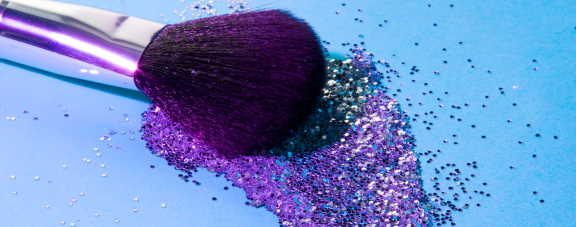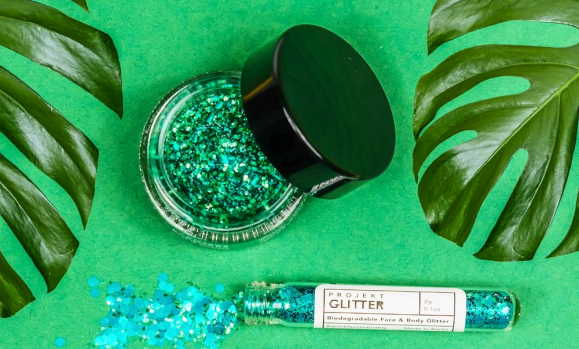What is glitter made of?

What is glitter?
Ever heard of glitter pollution? This is sad but true, and it is very glittery, i.e. plastic.
This page explains what glitter is, how regular glitter can be harmful to the environment, and what kind of eco-friendly alternatives there are.
So, what is glitter?
Most of the molds are composed of aluminum and plastic, in most cases polyethylene terephthalate (PET *). Although not as common as plastic-glitter, some craft glitter made out of metal and glass.
The most important aspect of glitter, obviously, is that it glows. So, although most conventional glitter that you find, both inside and outside, is made of plastic, in theory, glitter can be used for any kind of small reflection piece.
Commercial blinking ranges from super-super-small to super-small, ranging from 0.05 to 6.35mm (0.002 to .25 inches). Because of their small size and the fact that they are made of plastic, they are actually considered microplates or microplastics.

What is makeup glitter?
Makeup glitter is in most cases made of small particles of plastic, aluminum, and additional colors. Aluminum reflects that, aka brightening.
As you can read above, glitter particles are really small and are included in all of them as nail polish, eye shadow and hair spray.
How is glitter done?
Materials used to create glitter, for example, are made of plastic, aluminum, and preferred color sheets. Then, these sheets are then cut to the optional (small-to-small) size.
The difference between how makeup glitter and craft glitter made from that the earliest can be cut into circular shapes to avoid damaging the skin. If the smallest cells are cut into squares, the other glitter can have sharp angles.
That’s why you should double-check what kind of glitter you are applying to your DIY-cosmetics.
Glitter pollution
Ever heard of the concept of glitter pollution? Spread glitter-confetti at a party, shine on the cheeks before a carnival, shimmery eye shadow on New Year’s Day… In most cases, all of these are equivalent to environmental glow contamination.
You guessed it right because most of the glitter is plastic.

How does glitter harm the environment?
Store-bought glitter products are not recyclable due to its material composition (a mix of plastic and aluminum). Therefore, when the glitter is applied, washed or spread by air, it pollutes the environment when it ends up in streams, oceans, and oceans.
It works in the same way that microplastics are harmful to the environment.
How long does it take for the glitter to decompose?
Most glitches are synthetic and non-biodegradable. It can take hundreds of years after it comes into circulation, and even a thousand years before it decomposes.

